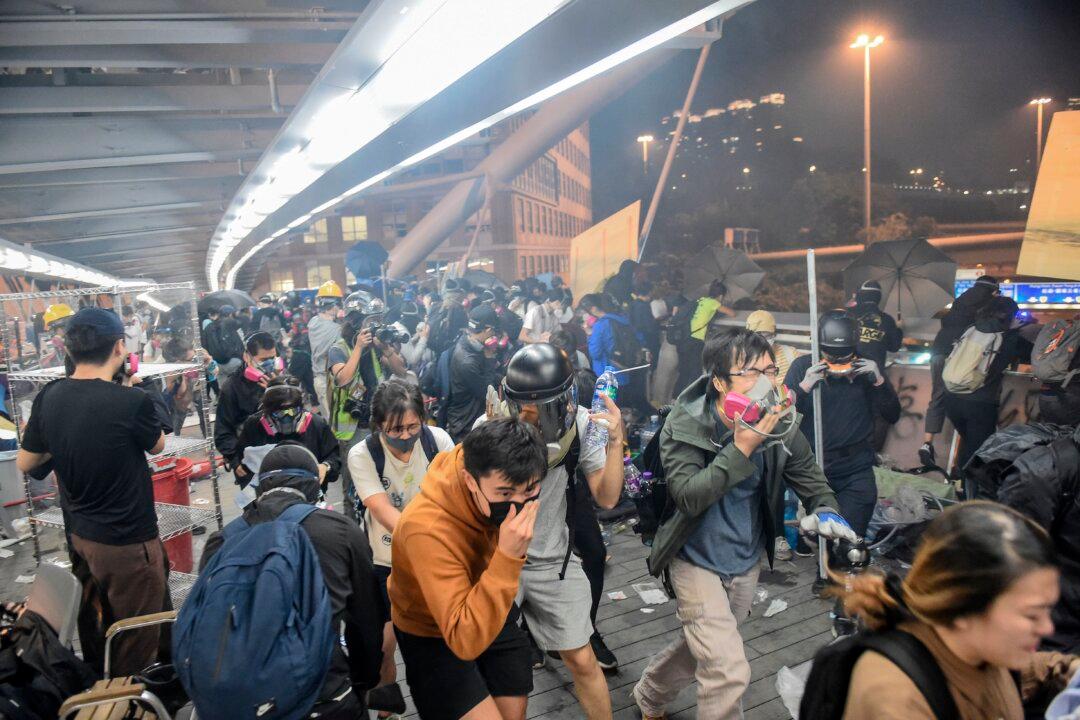HONG KONG—On a Sunday in November, Chau was out with her family to have a meal in her neighborhood, a residential area known as Tsuen Wan. While sitting outside the restaurant, she heard a loud bang.
Chau, 30, saw that tear gas had enveloped the street. She began to cough and tear up. Her daughter, almost 3 years old, was also caught in the cloud of tear gas.





